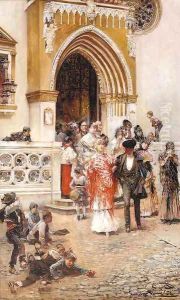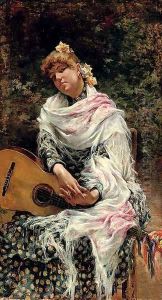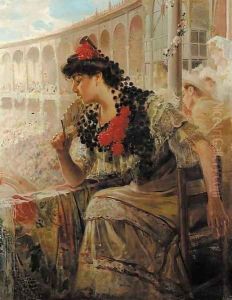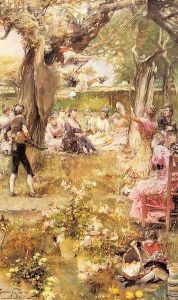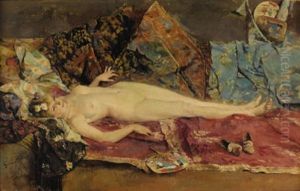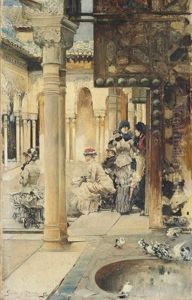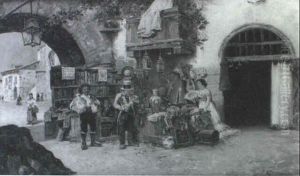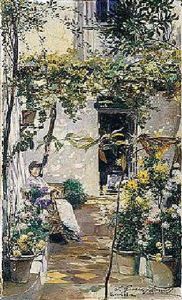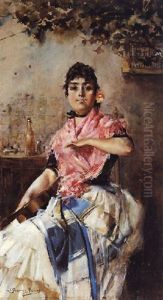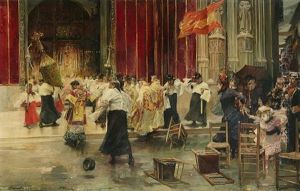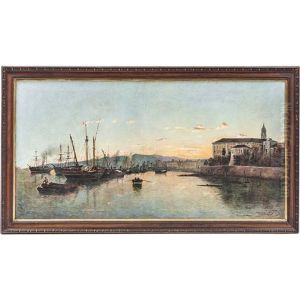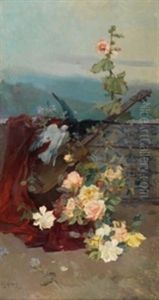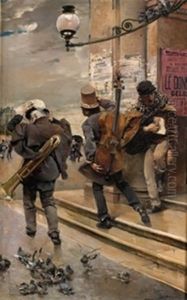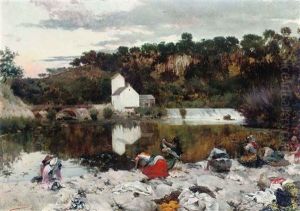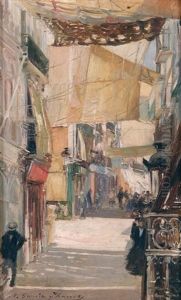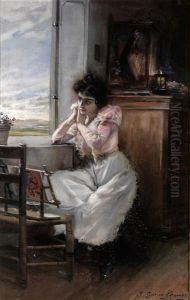Jose Garcia y Ramos Paintings
Jose Garcia y Ramos was a Spanish painter born in Seville in 1852. He is best known for his genre paintings depicting scenes from everyday life, often with a focus on the traditions and customs of his native Andalusia. Garcia y Ramos studied at the School of Fine Arts in Seville, where he was influenced by other Spanish artists such as Eduardo Cano de la Peña and Manuel Wssel de Guimbarda.
During his career, he developed a style that was characterized by a vibrant use of color and a keen observation of light and shadow, which added a sense of liveliness and realism to his works. His paintings often featured figures in traditional Andalusian attire engaged in dance, festivities, or other social gatherings, capturing the exuberance and cultural richness of the region.
Garcia y Ramos gained recognition in Spain and abroad, exhibiting his works in various national exhibitions and receiving awards for his artistic achievements. He also participated in international exhibitions, including the Universal Exhibition in Barcelona in 1888 and the World's Columbian Exposition in Chicago in 1893, further establishing his reputation as an accomplished genre painter.
Despite his success, Garcia y Ramos remained deeply connected to his roots in Seville. He was a member of the Seville Artistic and Literary Circle, which played a vital role in the cultural life of the city during the late 19th and early 20th centuries. His work reflects a nostalgic view of Andalusian society, portraying scenes that seemed untouched by the rapid changes of the industrial era.
Jose Garcia y Ramos died in 1912, leaving behind a legacy as one of the prominent figures in Spanish genre painting. His works continue to be appreciated for their charm and historical value, providing a glimpse into the cultural landscape of Andalusia during a time of great artistic flourishing in Spain.





